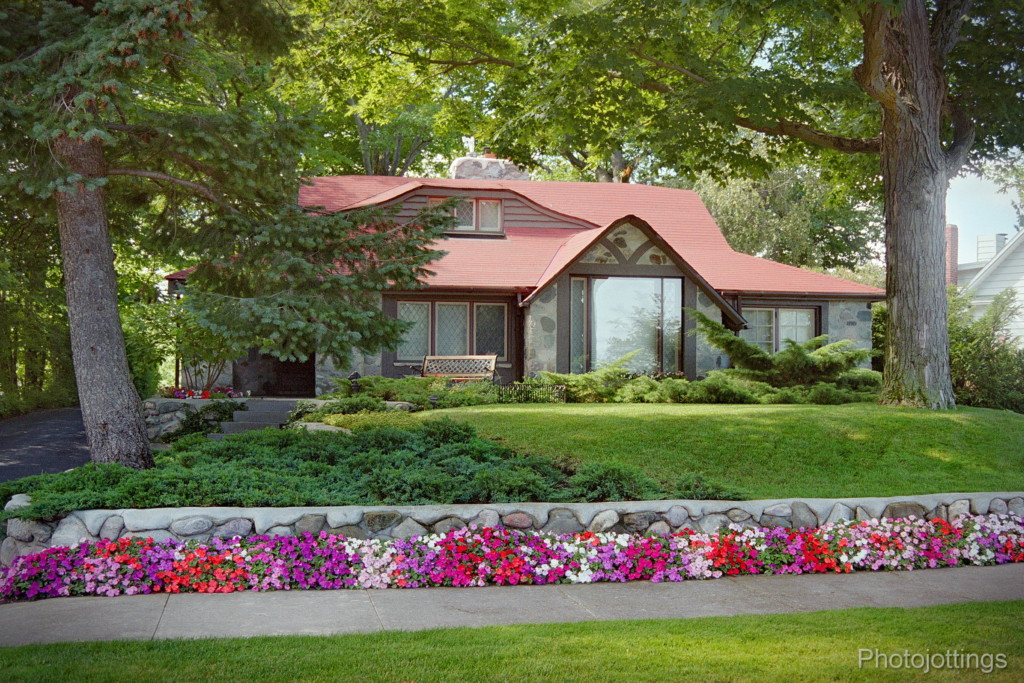Here’s another addition to our “Kodak” moments portfolio; brought to you by Kodak Gold color negative film from the early 2000s. For the second time the subject is a home in Charlevoix Michigan, (first time here); It’s special in that it was made in a quirky way. Earl Young, a Realtor who enjoyed photography and architecture, designed this, and many other nearby homes mainly during the 1920s through the 50s in the storybook style, using curved wavy roofs, oversized boulders and local fieldstone, and the best part; cartoonish looking chimneys and walls topped with ‘frosting’. This home features a curvy asymmetrical roof, and plenty of ‘frosting’ along the chimney and retaining wall in foreground. If I ever build a home, it’s going to be quirky and weird, similar to one of Earl Young’s homes, or maybe I’ll just wait for one to pop up on the market. Although our first Earl Young home we visited was situated on a large lot with Lake Michigan frontage, this one was built high and dry on a city lot. See more homes here.
I photographed this home with my trusty Minolta 7000 , which was still being used almost 15 years after buying it!! How old are our digital camera we’re using today? The picture was taken with the kit 35-70mm F/4 lens, probably set at 35mm, using Kodak Gold 100 film. I thought I was a pretty cool home, with the nice landscaping, large trees and colorful flowers along the wall. It looks like I underexposed this picture by about one stop, but it still came out looking really good I think! Back then I was practicing for my Real Estate photography business I planned on starting. Unfortunately things were going digital when I took this picture back in 2002 or 2003, and I had to relearn everything after buying my first ‘real‘ digital camera. I wound up spending another couple of years practicing before the business got underway. During that period Digital cameras were really bad compared to film. The resolution was poor, only about 3-6mp, and you had to watch for highlight blowout and fuzzy sides of the image, yuck. Obviously, digital cameras have come a long way since then, but even small format 35mm film is good enough for today’s photos if you’re careful and have good equipment.
I scanned this negative on a Nikon 9000, fortunately it looks way better than the picture Kodak printed for me when I got them developed, read this post and check out the differences in the Kodak printed picture and the negative I scanned for the post.
Anyhow, hope you enjoyed my trip down memory lane courtesy of Kodak Gold 100.
